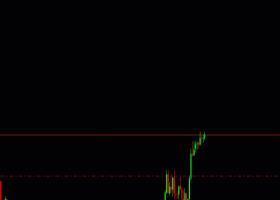
adt_fx FX Outlook 2015 – General (Weekly) Update – 9 May 2015
Forecasts & Trades Lifted $GBPUSD 2015 target a bit. Otherwise unchanged. Still expect broad $USD strength to prevail H2 2015. I’m Short $EURUSD →2015, and intending through May to ↑Short $EURUSD. Also Intending Long $USDJPY and Looking at Short $AUDCAD. Depending Commodity price trends in the short term, that is Fe price confirmation or not, I may revisit short $AUDUSD. Further opportunity for Short $EUR / Long DAX may have and may yet emerge into May.
Week Wash-up UK Election risk-off, on for a day, then well-off. I don’t think I’ll believe opinion polls in future. The Exit Poll ruled and a Hung Parliament prospect turned into an outright incumbent Majority. So $GBP shorts worked briefly but turned around strongly with the Exit Poll. $GBPUSD +2% for the week, $EUR dead flat & $DXY ($USD Index) fell 0.4%. Commodity FX strong except $NZD with weak Dairy auction outcomes probably largely responsible for RBNZ neutral stance. $NZDUSD -0.6%. See below.
The week has given rise to the prospect of Grexit, Brexit and Sexit (Yes, I have Scottish Heritage), the latter two possibly, subject to UK Referendums
Worth noting – US Consumer Credit growing at 8% p.a. Seeing that also highlighted Overall US Bank Asset growth, and Lending including commercial lending, all growing at 10% p.a. That’s healthy, and given negligible inflation, represents virtually 10% Real Overall and Commercial Lending growth.
The seasonal influences of 2014 for $USDJPY may have just started to eek in. For all I can see $USDCHF is smoking something it shouldn’t be. It would appear the partial legalisation through the US has really kicked-in for $CHF. EM FX has been soft through it all. Bond prices fell as the general theme swung strongly for at least two days to Bond Market Normalisation, as Bill Gross called an end to the heavenly bond market conditions that have prevailed for several years. US rates should lead the way H2 2015 but maybe a general pick-up in growth and inflation trends will contribute to the theme as well. EU Bonds, and to a lesser extent Major Commodity economies in particular, saw significant shift. German 10Yr Bunds 0.55%, from 0.36% 1wk ago and 0.07% 2wks ago. They may have reached 0.7% briefly during the week. Still seems a little unjustified to me in the context of QE. US bond gaps v almost all other fell noticeably. Again, I don’t expect this to be sustained.
Thematically, the strength in $EUR, and for that matter Commodity FX, in the situation US (& China) economic weakness were sustained, appears to imply the EU (& possibly UK) would be the Global Growth Engine. This seems to me to be a bit fanciful and in this situation EU growth would not be sufficient to be materially divergent from the US. If on the other hand, as I expect, US economic winter freeze gives way to spring growth, then there Will be material divergence in economic performance, data and interest rates – US numbers being higher, despite the US perhaps contributing to EU recovery. Also we still have EU-ECB-QE (& Japan QQE & UK APP). So in either instance I find it hard to see sustainable $EUR outperformance, at least v $USD.
Commodity FX Maybe a slight shuffle in Commodity FX preferences is due, or has occurred in the context of what will most likely be renewing weakness v $USD. I prefer Oil to Fe, but I am now concerned at Dairy given the Dairy industry conditions highlighted last week. I would be neutral $NZD for the time-being. Vale and BHP curtailing some near term Fe production expansion along with some failures / closures, against RIO committing to it’s expansion program, doesn’t do it for me. I find more reason for sustained Oil price than for latest Fe prices being sustained or increased. Fe is up 26% in 4wks. See pricing charts in associated commentaries (@adt_fx). So $AUDNZD at 1.06 may be right for now. As for suggestions of 1.10, I am not convinced and any sign of Dairy price stabilisation / strength may well give reversion to the longer term decline in the pair. I am Looking at $AUDCAD Short with a view to further weakness. Aus remains a concern for all the reasons highlighted above and previously in this commentary and a relatively tight Federal Budget is due Tuesday as Europe/UK is having morning tea.
Aus Focus - There is an argument in Australia that interest rate moves around the 2% level are meaningless, ie. Money is price inelastic at that point or there is a Liquidity Trap. Well, I don’t agree, and why would the US-Fed not just set rates at 2% if that were the case? The RBA cut 25bp to 2% last week. April PMI’s were all below 50, some noticeably, and Unemployment drifted up (6.2%). Even with that Aus-US 10 Yr Bond gap rose to 70bp from the recent low 40bp. I suspect the no-interest rate-change proponents of recent months have vested interests. They want continued housing lending and price boom, which by the way is not necessarily in overall Aus economic interest, without the Macro Prudential Lending controls that may correspond with these and/or further interest rate cuts. That is, they are Australian Banks (two mainly – Commonwealth - $CBA:ASX - OCR forecast in February 2015 of 3.5% H2 2015), which would be suffering lower overall interest spreads with lower rates if rate cuts were fully passed-on – lower interest earned by Banks on Free Funds (capital) and cheap deposits. Meanwhile they sustain 15%+ ROE (negligible inflation so 15% is virtually Real ROE) and are now heading toward annual profits of $10B each!!
Equities US Q1 Earnings releases and discussions have apparently indicated some emerging wage increases in the US, which I have highlighted before. The Retail sector has had wage rises bouncing from one Retailer to the next for a little while, with some pressures discussed following earnings releases. These are flowing around to Cafes and Restaurants now as well. If extended through these sectors, as appears to be occurring, and through other segments of the US economy, it will bode well for a healthy level of inflation and dynamic - multiplier effect on the economy through further gains in disposable income. At the same time, I don’t see this effect occurring through the EU for quite a while, particularly given ongoing high rates of unemployment – only Germany of the major EU economies <10%. If anything EU unemployment rates have popped back up a little following one or two months of decline, if any. US unemployment rate down to 5.4% in April from 5.5%.
Coming Up 11 May - UK Manufacturing Production & BOE Monetary Policy, US Fed LMC, 12 May - Aus Federal Budget, 13 May - China Production/Retail/Investment, EU GDP, UK Inflation, US Retail Sales, 14 May – US PPI, 15 May - US Consumer Confidence.


